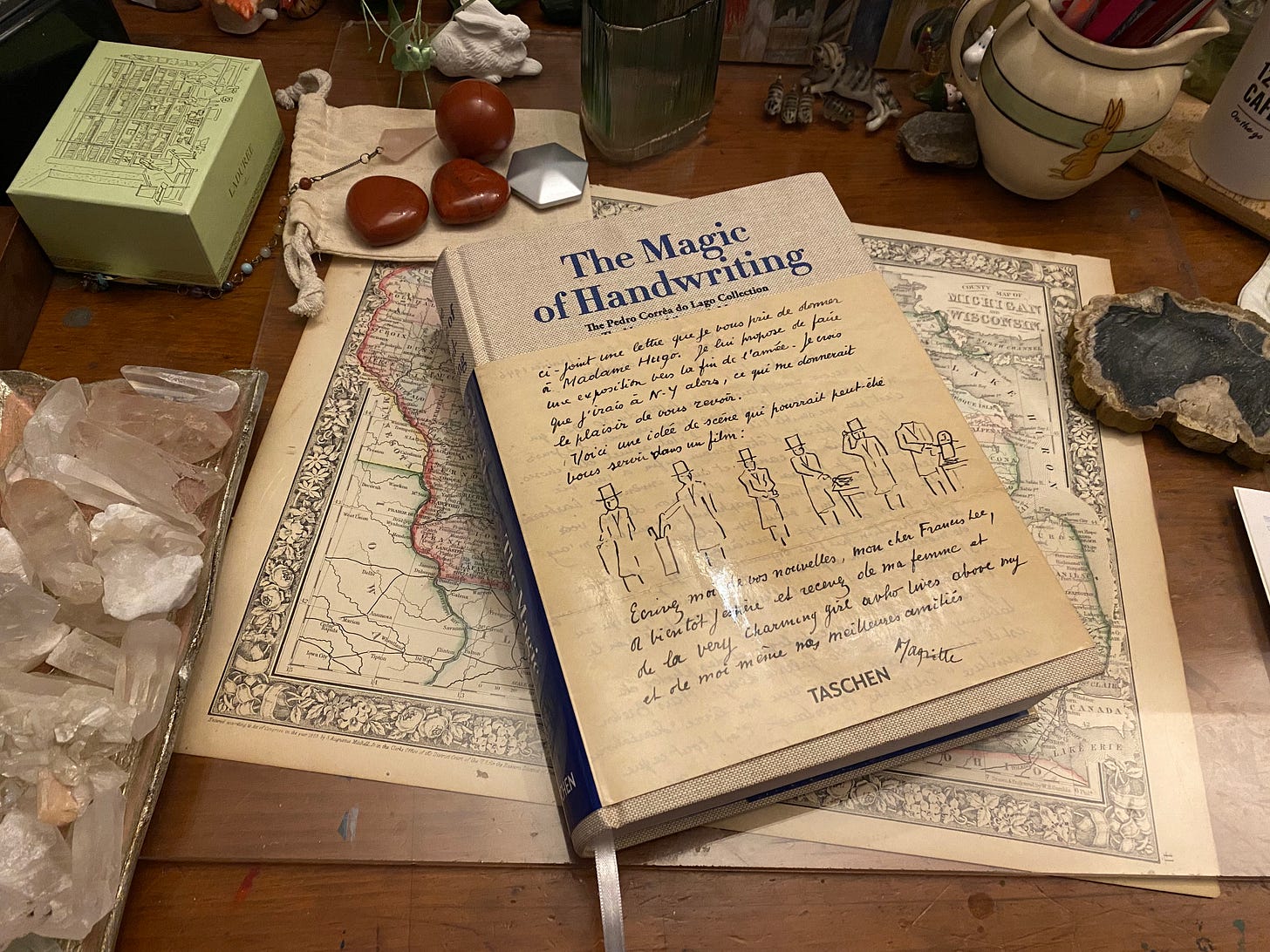Handwriting Part 2
The Magic of Handwriting
A few days ago I was talking with my mom in the midst of the afternoon shuffle. She was carrying her classic batch of items - coffee in a to-go cup, glasses and a watch cap, and a bundle of books. As she stood I noticed one particular book in her arms, ‘WHAT is that??’ I asked her. ‘Oh darn,’ she said, as it was meant to be a surprise. She handed it to …



